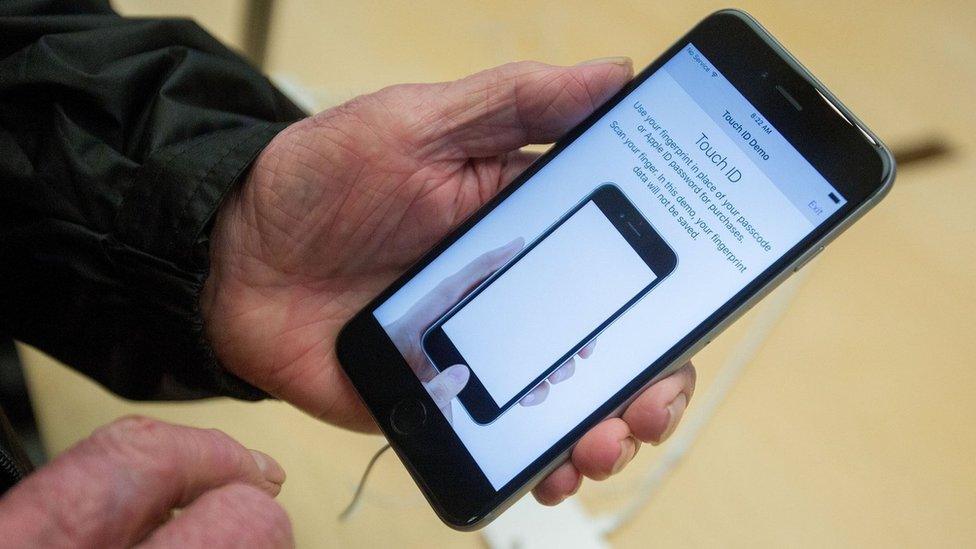Apple 'caught by Australian error 53 undercover sting'
- Published

A security measure related to Touch ID caused the 'error 53' issue
Investigators posing as Apple customers have told a court they were given misleading information about devices previously serviced by third parties.
The Australian Competition and Consumer Commission (ACCC) began legal action against Apple in April.
It alleges that Apple "routinely refused" to repair devices disabled by an error if they had previously been fixed by an unauthorised provider.
The court documents reveal that Apple has denied the ACCC's allegations.
In the documents, seen by the Guardian, external, Apple said it had not misled or caused any harm to its Australian customers.
'Hypothetical circumstances'
The files reveal how the ACCC's investigators called all 13 of Apple's Australian retailers, posing as customers whose iPhone speakers had stopped working after the screen had been replaced.
In each case, Apple told the caller "that no Apple entity... was required to, or would, remedy the defective speaker at no cost... if the screen of the iPhone had been replaced by someone other than Apple Australia or an Apple-authorised service provider".
Apple said that the phone calls had been about "hypothetical circumstances" and that no breach of consumer law had therefore occurred.
It said that genuine customers would be given other information outlining their rights under Australian consumer law, under which consumers have the right to a free repair or replacement if a product is faulty or of unacceptable quality.
When the ACCC brought its case against Apple, Rod Sims, who chairs the watchdog, said the rights provided by Australian consumer law "exist independently of any manufacturer's warranty and are not extinguished simply because a consumer has goods repaired by a third party".
He added that those rights "extend to any software or software updates" required.
Error 53
The so-called "error 53" occurred after owners downloaded an update for their iPhone or iPad's operating system.
Many of those affected had used a third-party service for repairs, often to replace a cracked screen.
The software included a "security measure" to check that the Touch ID fingerprint scanner was working correctly.
If it detected a mismatch between the sensor and the screen, it would assume that an unauthorised attempt had been made to access the device and disable it completely.
The fault first appeared in late 2014.
In February 2016, Apple issued a fix that made affected devices usable again, in part by disabling Touch ID.
- Published25 May 2017
- Published6 April 2017
- Published12 April 2017
- Published1 February 2017